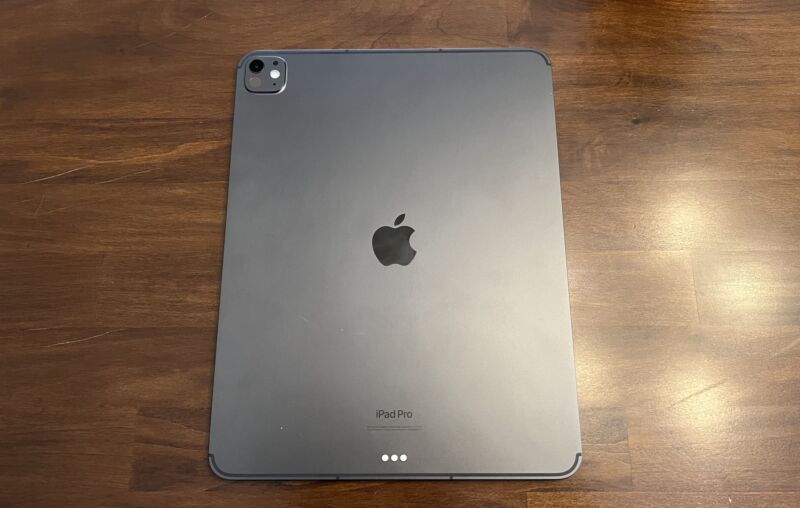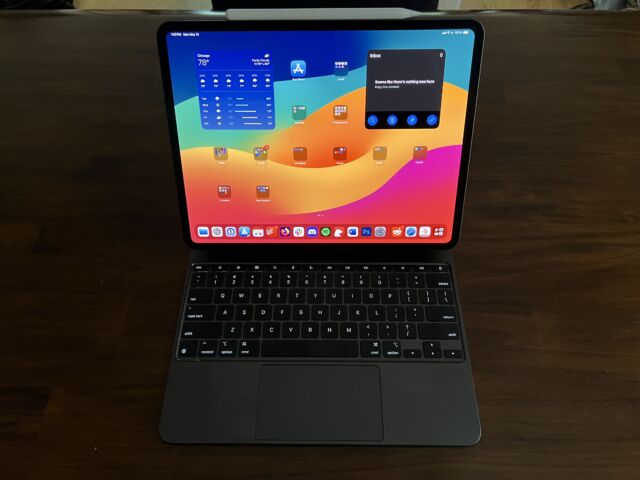
Samuel Axon
The new iPad Pro is a technical marvel, with one of the best screens I’ve ever seen, performance that few other machines can touch, and a new, thinner design that no one expected.
It’s a prime example of Apple flexing its engineering and design muscles for all to see. Since it marks the company’s first foray into OLED beyond the iPhone and the first time a new M-series chip has debuted on something other than a Mac, it comes across as a tech demo for where the company is headed beyond just tablets.
Still, it remains unclear why most people would spend one, two, or even three thousand dollars on a tablet that, despite its amazing hardware, does less than a comparably priced laptop—or at least does it a little more awkwardly, even if it’s impressively quick and has a gorgeous screen.
Specifications
There are some notable design changes in the 2024 iPad Pro, but really, it’s all about the specs—and it’s a more notable specs jump than usual in a couple of areas.
M4
First up, there’s the M4 chip. The previous iPad Pro had an M2 chip, and the latest Mac chip is the M3, so not only did the iPad Pro jump two whole generations, but this is the first time it has debuted the newest iteration of Apple Silicon. (Previously, new M-series chips launched on the Mac first and came to the iPad Pro a few months later.)
Using second-generation 3 nm tech, the M4’s top configuration has a 10-core CPU, a 10-core GPU, and a 16-core NPU. In that configuration, the 10-core CPU has four performance cores and six efficiency cores.
A lower configuration of the M4 has just nine CPU cores—three performance and six efficiency. Which one you get is tied to how much storage you buy. 256GB and 512GB models get nine CPU cores, while 1TB and 2TB get 10. Additionally, the two smaller storage sizes have 8GB of RAM to the larger ones’ 16GB.
This isn’t the first time Apple has tied RAM to storage configurations, but doing that with CPU cores is new for the iPad. Fortunately, the company is upfront about all this in its specs sheet, whereas the RAM differentiation wasn’t always clear to buyers in the past. (Both configurations claim 120GB/s memory bandwidth, though.)

Samuel Axon
Regardless of the specific configuration, the M4 promises substantially better CPU and GPU performance than the M2, and it supports hardware-accelerated ray-tracing via Metal, which some games and applications can take advantage of if developers put in the work to make it happen. (It looked great in a demo of Diablo Immortal I saw, but it’s unclear how often we’ll actually see it in the wild.)
Apple claims 1.5x faster CPU performance than the M2 and up to 4x faster graphics performance specifically on applications that involve new features like ray-tracing or hardware-accelerated mesh shading. It hasn’t made any specific GPU performance claims beyond those narrow cases.
A lot of both Apple’s attention and that of the media is focused on the Neural Engine, which is what Apple calls the NPU in the M-series chips. That’s because the company is expected to announce several large language model-based AI features in iOS, macOS, and iPadOS at its developer conference next month, and this is the chip that will power some of that on the iPad and Mac.
Some neat machine-learning features are already possible on the M4—you can generate audio tracks using certain instruments in your Logic Pro projects, apply tons of image optimizations to photos with just a click or two, and so on.


















+ There are no comments
Add yours